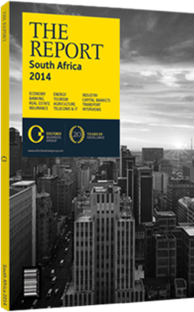OBG talks to Johan van Zyl, CEO, Toyota Africa

Interview: Johan van Zyl
What impact has the Automotive Production Development Programme (APDP) had on South Africa’s auto manufacturing output?
JOHAN VAN ZYL: The APDP’s focus on raising local value addition will boost the auto industry’s manufacturing output and export competitiveness. The industry has been a pillar of South Africa’s industrialisation policy under the Industrial Policy Action Plan. It began with the Motor Industry Development Programme, which by incentivising exports acted as a stepping stone into competitive global markets. Now, the APDP aims to increase local value addition, not just for components themselves but for their materials – to localise the one but import the other doesn’t really create big value, as in many cases the material costs are more than half the component’s value. We must maximise local value added for the entire value chain, from raw materials right up to the manufactured component. The APDP has also reinforced policy certainty, which is critical for the industry to make long-term investment decisions.
How far is South Africa from achieving its goal of producing 1.2m vehicles a year by 2020?
VAN ZYL: Sadly we are running out of time to meet that target. When it was set, the business environment looked completely different than it does today. Then, we were in a fast-growing economic cycle before the global financial crisis; now, we are probably about 30% below the target, so it will be hard to reach it in time. While there are encouraging developments – some producers are boosting capacity, new entrants have built plants in the past year – some challenges remain, such as labour stability and competitiveness. Growth in the domestic and export markets will be key.
How does South Africa compare with other automotive manufacturing markets?
VAN ZYL: Its automotive sector is competitive for a relatively small market, but not enough so going forward. The main reasons are low labour stability, low productivity, exchange rate volatility, logistics costs, low local content in vehicles and low production volumes.
Labour stability is absolutely essential to ensure we can attract further investment in the industry. Because South Africa’s market is small it needs to export to achieve economies of scale. However, it cannot be an exporter of substance if it is not perceived as a trustworthy supplier, especially given the country’s geographic position and long transport routes.
Productivity must also be improved at all levels of management and the workforce. Low inflation and a stable exchange rate are key to a vehicle manufacturer’s cost structure. That South Africa has neither of these means it must require more local parts on domestically produced vehicles. There is no reason to assemble vehicles here if we do not have high local content, especially when logistics costs are also high.
Last, we need to improve the efficiency of our logistics systems. The good progress made in the past couple of years needs to continue. Value-added products should have beneficial port tariffs. There has also been improvement on utilisation of the rail systems and productivity at our ports. The whole value chain, from manufacturing to logistics, can be optimised.
What sort of challenges do suppliers face when trying to meet the specifications of original equipment manufacturers (OEMs)?
VAN ZYL: OEMs can source from wherever they want, meaning from wherever they can find the most competitive product that meets requirements of quality, cost and stability of supply. Relative to the protective duties in other emerging markets, we are very much an open market, which puts pressure on suppliers. We therefore need stronger support mechanisms for our supply network. The new focus on local content means our supplier base needs to expand: at the moment, it is about 20% inefficient compared to others in the world. There is ample scope for improvement and introduction of new technologies across all tiers of the supply base.
You have reached the limit of premium articles you can view for free.
Choose from the options below to purchase print or digital editions of our Reports. You can also purchase a website subscription giving you unlimited access to all of our Reports online for 12 months.
If you have already purchased this Report or have a website subscription, please login to continue.

